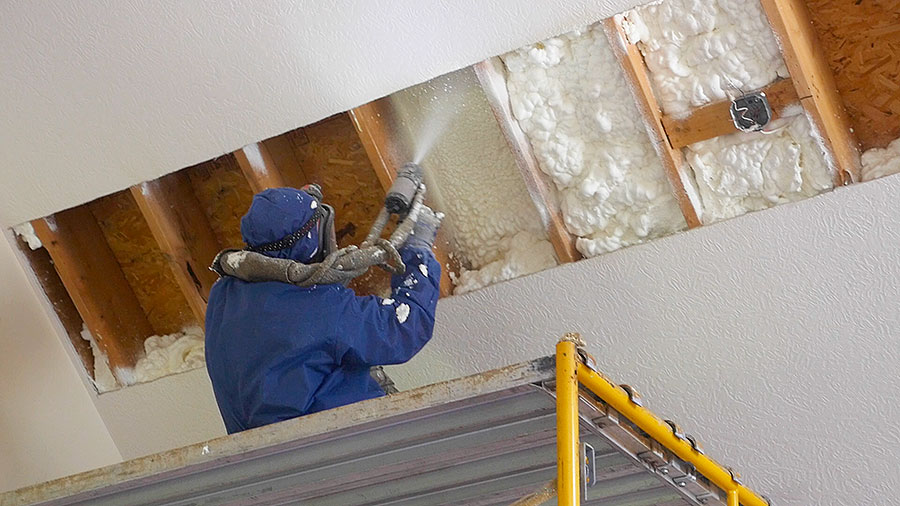Cathedral Ceiling Insulation Problems


Cathedral ceilings add a certain air of openness to them, but that openness can lead to problems if it isn’t insulated properly.
From ice dams to a leaky roof, little to no cathedral ceiling insulation will leave you with problems that could end up costing you a lot of money or damaging parts of your home.
RetroFoam of Michigan has insulated our fair share of cathedral ceilings, so we know the kinds of problems you can face without any insulation.
In our continued efforts to educate homeowners, we will discuss the problems you could be experiencing that you didn’t know were related to your cathedral ceiling insulation or lack thereof.
Cathedral Ceiling Insulation Problems
Whether you have older traditional insulation, like cellulose or fiberglass, or no insulation at all, these are some of the problems you could face.
- Ice dams form on your roof. Do the icicles forming on your roof rival the one that almost took Ralphie’s eye out in A Christmas Story? Are you noticing a build-up of ice at the edge of your roof? These ice dams are caused when the air you pay to heat escapes through the ceiling and out through the roof. That melted snow runs down the roof and stops where it eventually forms an ice dam. These ice dams can cause significant damage to your roof.
- You lose heat through your roof. It’s science – heat rises. If you don’t have an air barrier in place in your cathedral ceiling, the warm air in your home is going up and out. This will put extra strain on your furnace, as you won’t be able to maintain a comfortable temperature.
- Every month you have high energy bills. If the air you’re paying to heat or cool is escaping through your cathedral ceiling because you have no insulation or the insulation isn’t working anymore, it’s going to end up costing you a fortune in monthly energy bills.
- Snow melting leads to leaks in your ceiling. Whether the snow is melting because heat is escaping through your cathedral ceiling insulation or the weather is starting to warm up, you could end up with a mess on your hands. If you already have ice dams and the snow behind it starts to melt, that water has no place to go besides sitting on your roof. The water will then leak into your home, and if you have fiberglass in your ceiling, then the material will hold that moisture and lead to bigger problems and damage.
- Moisture from leaks leads to mold and mildew growth. Those leaks in your roof can lead to bigger problems like mold and mildew growth. Especially if you have an insulation material in your cathedral ceiling that will retain and hold that moisture because it will also serve as a breeding ground for the mold. This will cost you money to clear up, but also can cause significant health concerns.
- In the summer your living room gets unbearably hot. The winter isn’t the only time you’re going to notice problems with your cathedral ceiling insulation. Just like the air can leak out, it can also leak in allowing for the hot, humid summer air to make your living space uncomfortable.
Cathedral Ceiling Insulation Solutions
Adding or updating the insulation in your cathedral ceiling is the best way to stop these problems.
The only question you’re left with is what material is best for your needs. It’s important to note, that even with traditional insulation you can still experience some of these problems because materials like fiberglass and cellulose still allow for air movement through them.
If you want to create an air barrier, then foam insulation is the best option since traditional materials can’t offer that.
If you want to learn more about foam insulation and its benefits, check out the Learning Center on our website.
About Amanda Emery
Amanda previously has worked as a breaking news and crime reporter, TV news producer, and editor in Flint and Detroit. Throughout her career as a journalist, she has won several awards from The Society of Professional Journalists - Detroit Chapter and the Michigan Press Association. As part of the RetroFoam of Michigan family, Amanda uses her experience as a journalist to write content that will help educate homeowners on the benefits of foam insulation. When Amanda isn’t writing, she’s spending time with her husband and rescued huskies. She also loves knitting, making art, cooking, and hosting dinner and a movie night for friends and family.


